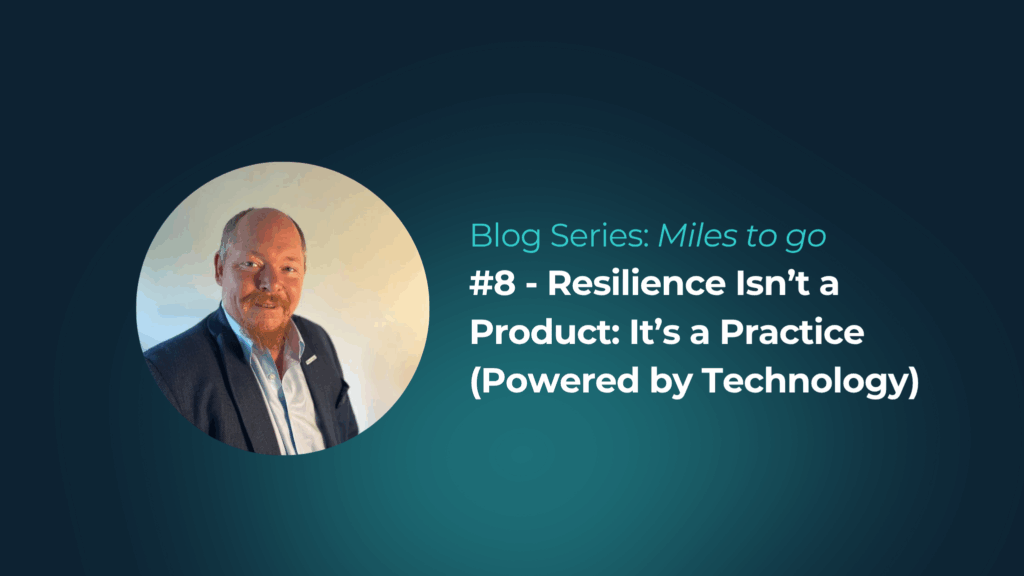Author: Owen Miles, VP Solutions Engineering EMEA for Restrata
Blog Series: ‘Miles to Go’ – Exploring the foundations of resilience & continuity
#8 – Resilience Isn’t a Product: It’s a Practice (Powered by Technology)

Resilience Isn’t a Product: It’s a Practice (Powered by Technology)
There’s a growing market for resilience solutions – platforms, dashboards, analytics tools – and rightly so. Technology has transformed how organizations prepare for, respond to, and recover from disruption. It enables visibility, accelerates decision-making, and connects people, assets, and operations in ways that were impossible a decade ago.
But resilience isn’t something you can buy off the shelf. It’s not a product – it’s a practice.
Technology is a powerful enabler, but it’s only one part of the equation. I’ve seen organizations with sophisticated platforms falter in a crisis because they hadn’t trained their teams, tested their plans, or embedded resilience into their culture. And I’ve seen smaller organizations succeed under pressure because they practiced, prepared, and empowered their people – even with limited tools.
Resilience lives in the decisions people make, the clarity of their roles, and the confidence they have in the systems around them. It’s built through repetition, reflection, and refinement. Technology supports that process – it doesn’t replace it.
One of the biggest barriers I see is fragmentation. Many organizations have multiple systems – one for incident management, another for asset tracking, another for communications – none of which talk to each other. In a crisis, this creates friction, delays, and confusion. Instead of enabling resilience, fragmented systems create silos. The result? Teams waste time reconciling data, duplicating effort, and struggling to get a clear picture of what’s happening.
The most effective resilience strategies combine smart systems with strong habits. They use technology to surface insights, automate workflows, and coordinate response – but they also invest in leadership, communication, and continuous learning.
In other words, resilience is a practice powered by technology. The platform is the engine – but the people are the drivers.
So if you’re investing in resilience tech, make sure you’re also investing in the processes and culture that make it work. Because the best tools in the world won’t help if no one knows how – or when – to use them.
Call to Action: Evaluate how your organization uses resilience technology. Is it embedded in daily practice, or sitting idle until a crisis hits? Strengthen the connection between tools and teams.
Next Week: We’ll look at the risks of fragmented systems and vendor lock-in—and how to choose tech that supports your strategy, not limits it.
